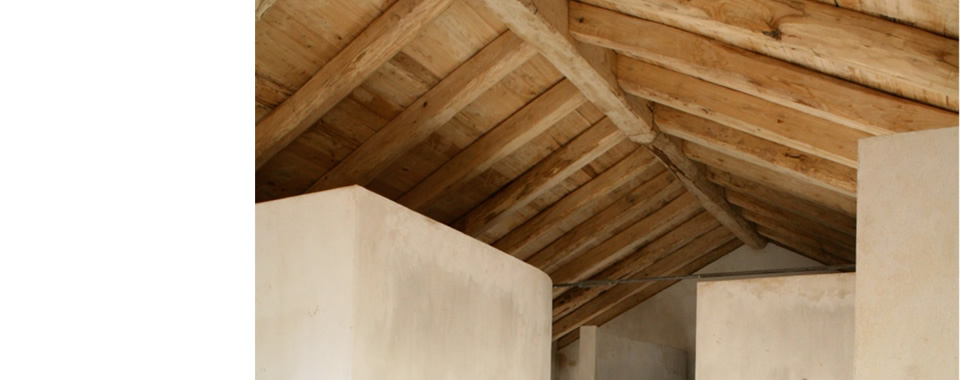

Score - Sustainable Construction in Rural and Fragile Areas for Energy efficiency
Guidelines for Integrated territorial Planning:
Involucre (insulation, mass, PCM)
The following guidelines come from a deep analysis of case studies, norms and regulations, in relation to the local level. This analysis is summarized in a card that can be downloaded in English language.
The term ‘insulation’ refers to materials which provide substantial resistance to heat flow. When these materials are installed in the ceiling, walls and floors of a building, heat flow into and out of the building is reduced, and the need for heating and cooling is minimized. Although ceilings and walls may be insulated, heat loss will still occur in winter if there are large areas of unprotected glass or through fixed wall vents and gaps and cracks around external doors and windows. Appropriate internal window coverings (e.g. lined drapes with pelmets) and draught proofing are vital to complement insulation. Insulation should always be coupled with appropriate shading of windows and adequate ventilation in summer. Without shading, heat entering the home through the windows will be trapped inside by the insulation and cause discomfort.
Fewer condensation problems:
Condensation can lead to mold and mildew problems. In hot, humid climates, moisture can enter into wall cavities through exterior cracks and result in costly damage to framing and insulation. In cold climates, gaps in the interior walls allow moisture from warm indoor air to enter wall cavities and attics. This moisture can condense on cold surfaces and lead to structural damage. By significantly reducing air leakage one can reduce or eliminate these problems.
Pursuant to the guidelines written above, here are synthetically reported the criteria/examples for pilot projects to be financed in MED territory, in relation with the specific treated theme. These criteria/examples, together with the ones resulting from all the themes of eco-construction tool matrix, will make up a Bio-construction Action Plan for each partner countries
- The effectiveness of the campaigns may be increased now that there is an economic crisis with no end in sight and attention is on cost cutting economizing and resource conservation. There needs to be considerable effort made to get people out of the “subsidy” mindset.
Possible criteria for MED bio–housing quality certificate
In law N142 (I) 2006 “about buildings’ energy efficiency there is a small reference about Involucre. But there is a detailed description about Involucre in KDP 414/2009 on the methodology of calculating the energy efficiency of a building and in Minimum Energy Performance Requirements of the Building Ordinance ΚDP 446/2009
Case studies
- Showroom GEVO – Limassol
- Ayii Anargyri Natural Healing Spa Resort
